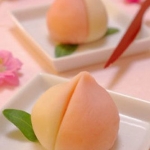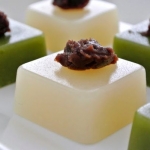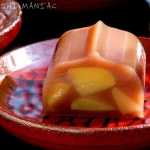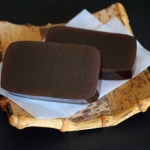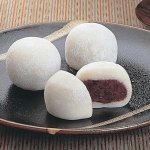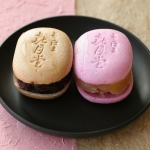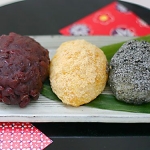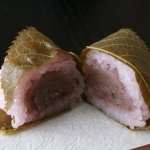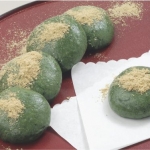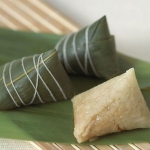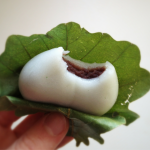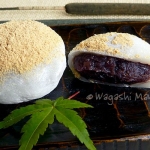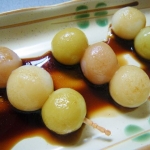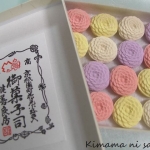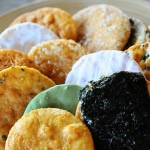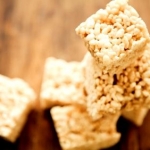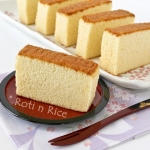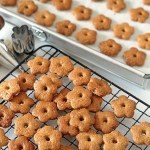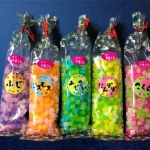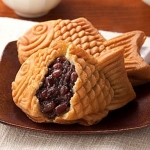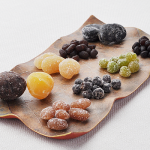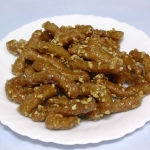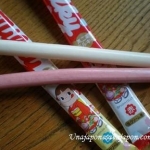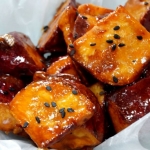Pastries
In Kyoto, which has had numerous shrines and temples since ancient times, “shinsen” sweets and “butsuzen” sweets were used as offerings. The “to-gashi” (Tang sweets) brought back by emissaries to Tang dynasty China evolved into “cha-no-yu-no-kashi” (cakes served with tea).
Though the basic types of Kyo kashi are “namagashi”, “hannamagashi”, and “higashi”, depending on their use and origin, Kyo kashi can also be classified into other categories. For example, there are the “giten-gashi” used in festivals and ceremonial occasions, the “kisetsu-gashi” enjoyed each season, the namagashi and higashi used in tea ceremonies, and the gift sweets used as souvenirs by tourists and locals.
Kyo kashi are handmade, the meticulously attentive techniques for producing them being passed down from person to person.
Many modern day sweets and desserts in Japan are also existent.
Kasagiya
This a sweet shop located in the middle of Ninenzaka stone steps, which started business in 1914. In front of the shop is a notice that says, “This is a Ninenzaka stone stairway which sweet lovers cannot pass through” and inside the shop are pictures painted by Yumeji.
On your left a few steps after starting down from the top of Sannen-zaka, Kasagiya is very easy to miss. It’s a tiny shop with a weathered façade and the sign is only in Japanese. The best bet is to get yourself in the general vicinity and then ask a local shopkeeper to point you in the right direction.
There’s a good picture menu with some English on it. In winter, hot tea and an azuki-bean sweet is the way to go; in summer, nothing hits the spot like an Uji-kintoki (a mountain of shaved ice covered with sweetened green tea) one of Kyoto’s oldest and most esteemed tea and sweet shops.
In the front room, you can see the artistic creations on display, but discerning Kyotoites quickly make for the serene tea room in back, where they can enjoy some of the shops famed sweets accompanied by a thick cup of perfectly whisked matcha tea.
Address: 349 Masuyacho Higashiyama-ku Kyoto
Kagizen Yoshifusa
This place was established in the mid-Edo period. They have continued making Kyo-gashi (Kyoto sweets) at the corner of Kyoto’s Hanamachi, the stylish district of Gion. Like the numerous long-established sweet shops in Kyoto, the sweets have been offered to common shoppers, the “Chajin” (tea connoisseur) and temple priests alike, but being situated in Gion, the sweets have been enjoyed by writers, artists, and patrons, along with the women of the Hanamachi.
Tsuruya Yoshinobu
This place is one of the oldest and most popular Kyo-gashi shops in Kyoto. This is one of the rare places where you can see the process of making Kyo-gashi. Artisans are proud to craft this art for the next generation and would love to talk with you and explain everything about Kyo-gashi. The principal store and studio itself is a traditional Kyoto building, so you will feel an ancient sense of Kyoto as soon as you enter. This is one of the special finds in Kyoto and a great way to enjoy one of the greatest Japanese traditional arts.
Kyo-gashi is steeped in history, and special artisans who have inherited its traditional techniques have protected its craftsmanship and refined these artworks for a life time. Each delicate piece of work is like an insight into the souls of these artisans. In the principal design center and showroom of “Tsuruya Yoshinobu”, you can relax in their second floor tea lounge and see how those confectioneries are made. You can also taste it as soon as it is made. This is the perfect pick me up place after a day’s sightseeing, especially if you are near the Kyoto Imperial Palace.
http://www.turuya.co.jp/en/index.html
|
25 Must-Try Japanese Confectioneries (Wagashi) |
|
Nama-gashi Nama-gashi comes in a wide selection of sweet cakes. They are usually made from sticky rice flour (mocha-gome), kanten (agar-agar), an (sugar and bean paste), and wheat flour. |
|
Made from sticky rice flour, sugar and white bean, Nerikiri is usually molded into shapes such as flowers, fruits or birds to represent the seasons. |
|
Famous during the summer, Mizu-yokan is made from azuki beans, sugar, and kanten. |
|
Mushi-yokan is made by steaming the mixture of an and wheat flour. This confectionary usually comes with chestnuts. |
|
Similar with Mizu-yokan, neri-yokan is made from azuki beans, sugar and kanten but with less water. |
|
One of the most famous wagashi, Manju is made from wheat flour filled with an. It comes in dumpling-like shape. |
|
Round or square shaped wafer filled with an, Monaka is usually big and quite filling. |
|
Ohagi, or botamochi, are sweet rice balls which are usually made with glutinous rice. They are commonly eaten during the higan periods in spring and autumn. |
|
A small pink mochi, Sakura-mochi usually filled with azuki beans paste and wrapped with a sakura leaf. |
|
Filled with azuki bean paste, kizi-zakura is made from transparent jelly of kuzu (arrowroot). It is usually served chilled during the summer. |
|
Another mochi filled with azuki beans, kusa-mochi is a dumpling shaped made from rice flour with yomogi leaves. |
|
Wrapped in bamboo leaves, chimaki is a sweet rice dumpling. |
|
Kashiwa-mochi is a rice-flour dumpling filled with an. Unlike Chimaki, Kashiwa-mochi is wrapped with oak tree leaves. |
|
Daifuku is a large amount of an wrapped in a very thin layer of mochi. |
|
Kushi-dango is small rice-flour balls held on a stick. They are usually coated with sticky sauce made from soy sauce and sugar. |
|
Hi-gashi Hi-gashi is basically the dried form of wagashi. |
|
Rakugan is made from glutinous rice and sugar. The dough is shaped using a wooden mold. |
|
Sembei are rice crackers. |
|
Made from rice and wheat, okoshi is a toasted cake where it is coated with syrup before it is dried. |
|
Namban-gashi Namban-gashi are cakes brought to Japan by the Spanish and Portuguese during the 16th century. |
|
A sponge cake made of wheat flour, sugar, and eggs. |
|
A type of cookie, boro is made from wheat flour, sugar, and eggs. |
|
These are a little sugar balls made from syrup and corn starch. |
|
Zatsu-gashi A cheaper kind of Japanese confectionary, Zatsu-gashi are simple snacks suitable for daily tea sessions. |
|
Tai-yaki is a kind of pancake filled with red bean paste. |
|
Different kind of beans such as azuki or kidney beans are boiled then sprinkled with sugar. |
|
Karinto is fried strips of dough made from wheat flour, sugar, and eggs. This crunchy finger food is then sprinkled with sugar. |
|
Also known as the “thousand year candy,” Chitose-ame is boiled mizu-ame (glucose). |
|
Daigaku-imo is basically fried sweet potatoes coated with sticky syrup and kuro-goma (black sesame seeds). |


